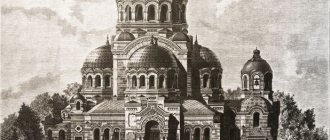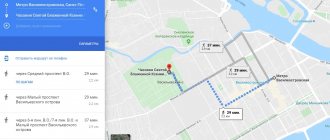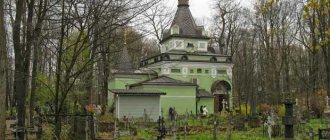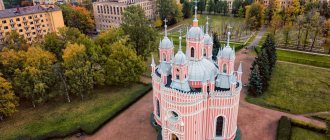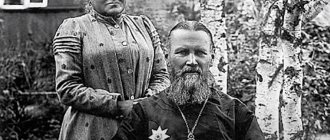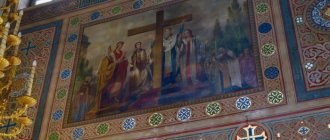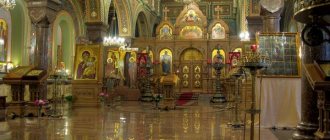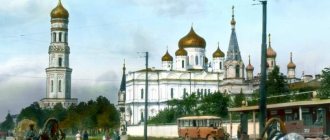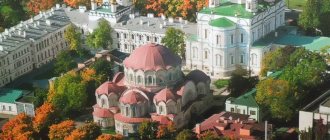It is unlikely that at least one person living in Russia could deny themselves the pleasure of going to St. Petersburg in the summer.
White nights, bridges, street musicians, boat trips, magnificent museums and theaters - the cultural capital is ready to give tourists all this.
But few people know that St. Petersburg is important in our country not only culturally, but also religiously. There are many shrines in the city on the Neva and its suburbs. A week is not enough to see them all.
Therefore, we will tell you only about a few of the most significant holy places that guests of St. Petersburg can explore over the weekend.
The shrines of St. Petersburg are very diverse, from grandiose cathedrals to small cozy churches. But it’s worth starting, perhaps, from the front side of the city and the largest Orthodox church in St. Petersburg.
Saint Isaac's Cathedral
St. Isaac's Cathedral, one of the first cathedrals, was founded in the same days as the Northern capital itself, under Peter 1. It acquired its modern appearance under Tsar Alexander 1, when it was rebuilt according to the design of the architect Montferrand.
When one of the first holy places in St. Petersburg was consecrated, the Holy Synod donated shrines with a piece of the Holy Cross and an ark with a piece of the relics of the Apostle Andrew the First-Called.
An icon with a particle of the relics of St. Panteleimon was brought from Athos in 1871.
The Miraculous Image of the Savior, painted in 1693, is considered miraculous; Emperor Peter I prayed before it.
In this holy place of St. Petersburg there is a revered copy of the Tikhvin Icon of the Mother of God.
In 2022, the Church donated to St. Isaac's Cathedral a reliquary with the relics of Saints Nicholas the Wonderworker and Spyridon of Triminfutsky, the apostles Peter, Paul and Andrew the First-Called. They are kept in the Alexander Nevsky chapel and taken out every morning.
Reliquary with the relics of Alexander Nevsky
Today the shrine is installed in the Trinity Cathedral of the Alexander Nevsky Lavra. The cathedral in the classicism style was built according to the design of the architect I. Starov at the end of the 18th century. It is part of the ensemble of the Alexander Nevsky Monastery (Lavra), founded by Peter the Great himself. The place for construction was not chosen by the emperor by chance. It was believed that it was in the vicinity where the Black River (now Monastyrka) flows into the Neva that the prince won a victory over the Swedish army in 1240.
The saint is revered as the patron saint of the military and diplomats and bestows on them the qualities that he himself possessed. According to the chronicles, Alexander was a wise diplomat, a prudent ruler and an excellent military strategist. For a long time people prayed to Nevsky on the eve and after military operations. In his prayers they ask him for the protection of his family and homeland. A large number of churches were built in his honor even outside of Russia.
In the mid-18th century, the daughter of Peter I, Empress Elizabeth II, donated a silver shrine, richly decorated with a complex pattern, for the repose of the relics.
During Soviet times, the Lavra was greatly devastated. The luxurious shrine with the relics was opened and placed in one of the Hermitage exhibitions, and the remains were transferred to the Museum of Atheism. In 1988, the relics were returned to the cathedral, and the sarcophagus is still in the Winter Palace, where restoration work is being carried out on it. Upon completion of the restoration, they plan to create a copy of the shrine and move it to the cathedral in its original place.
Alexander Nevsky Lavra
One of the famous holy places of St. Petersburg is the Alexander Nevsky Lavra. It was built on the site of the battle with the Swedes in 1241 by order of Peter the Great. Here are collected the relics of the Kiev-Pechersk saints, St. Innocent of Irkutsk, Alexander Nevsky.
You can pray before the icon of the Mother of God “Neva Quick to Hear”, brought from Athos, the holy martyr Paraskeva Friday, St. Seraphim of Sarov and other shrines.
The great commander A. Suvorov is buried in the Alexander Nevsky Lavra.
How to get to St. Petersburg
St. Petersburg is one of the largest transport hubs in Russia. There is an international airport, several railway and bus stations, as well as passenger ports. So travelers will not have any difficulty finding transport to St. Petersburg from almost anywhere in the world.
Flights
Railway tickets
Useful services for travelers
Flights
Train schedule
Bus schedule
Excursions
Accommodation
Kazan Cathedral
Under Alexander 1 in 1801, the Kazan Cathedral was founded on the site of the Nativity Church. Its visit is included in the program of any trips to the holy places of St. Petersburg.
The temple was specially built to store the miraculous Kazan Icon of the Mother of God. In 1812, it became a repository of trophies of the Great Patriotic War, army banners of Napoleonic troops, keys to conquered cities, and in 1813 Field Marshal M.I. Kutuzov was buried in the cathedral.
It immediately became a famous holy place in St. Petersburg, helping in arranging marriages and healing eye diseases. In front of the Kazan Icon they also prayed for the protection of the Fatherland from enemies.
After the revolution, the cross was removed from the temple, in its place a gilded ball with a spire was installed, and later the Museum of the History of Religion was opened in the church.
During the war, the temple was damaged by bombing, then major repairs were carried out.
In 1991, with the beginning of the revival of Orthodoxy in Russia, it was opened for worship and became one of the significant holy places in St. Petersburg and throughout Russia. Today it is the central cathedral.
The cathedral opens daily at 6.30, Liturgy and confession begin at 7.00, the second Liturgy at 10.00. Closes after the end of the evening service.
Chapel of Xenia the Blessed
During her lifetime, Xenia the Blessed gained fame and people's love through her service to God and people and her amazing gifts of grace. She often appeared in visions: she warned of danger and saved from disasters.
The absence of children is a great cause for sadness for many couples. Year after year goes by, and pregnancy does not occur even with access to the most modern medical capabilities. It is no secret that prayer to God often helps to give birth to a long-awaited child. The holy place in St. Petersburg that helps you get pregnant is the Chapel of Xenia the Blessed.
Having lost her beloved husband at the age of 26, Ksenia severed all ties with worldly life, devoting her life to serving God. She distributed all her property to the poor. During the day she wandered around the city in her husband’s uniform, and at night she went to deserted places and prayed. She was always invited to go to trading stores, since many buyers appeared after her, and people often turned to her for healing. During her lifetime, she helped in arranging marriages, finding children, finding work, and had the gift of prophecy.
Now Ksenia often comes in dreams to those who turn to her with prayers, warning of danger.
During her lifetime, the people revered her as a saint, although she was officially canonized only in 1988. Xenia the Blessed was buried at the Smolensk cemetery not far from the Smolensk Church. Her grave is now located under a stone mound in the chapel, which was erected in 1902. Inside there is a mosaic icon of Blessed Xenia.
For a long time, the tradition has been preserved of leaving notes with wishes on her grave within the walls of the chapel.
It is open daily; in summer – from 10.00 to 17.00, in winter – from 10.00 to 16.00.
Places in St. Petersburg associated with the names of famous Orthodox saints
Places associated with the names of revered Orthodox saints, such as the Holy Trinity Alexander Nevsky Lavra, St. John's Monastery, the Chapel of St. Blessed Xenia of Petersburg, the Holy Trinity Alexander-Svirsky Monastery, the chapel of St. Seraphim Vyritsky are located both in St. Petersburg and on territory of the Leningrad region.
Holy Trinity Alexander Nevsky Lavra
The Alexander Nevsky Lavra (a monastery with a special status) was founded in 1713 on the supposed site of the victory of Prince Alexander Nevsky over the Swedes and Teutons. History says that at the origins of the foundation of the monastery was Emperor Peter I, who not only initiated the construction of a temple and seminary within the monastery, but also contributed to the transfer of the relics of St. Alexander to the new monastery from Vladimir.
There was a break in the existence of the monastery within the Lavra only from 1936 to 1957, when there was a massive closure of churches and monasteries during the period of the struggle of the Soviet government against religion.
One of the main shrines of the monastery, which people come to venerate, is the relics of St. Alexander Nevsky, who is considered one of the spiritual patrons of St. Petersburg. Being a famous defender of Russian lands and faith during his lifetime, Grand Duke Alexander Yaroslavich accepted the schema and rested in 1263 in Gorodets. Miracles associated with the incorruptible relics of the blessed prince occurred from the very moment of the funeral service.
Believers can venerate the relics of St. Alexander in the main Trinity Cathedral of the Lavra. The noble Prince Alexander Nevsky is asked for help in getting rid of the invaders, for success in military affairs, for the good behavior of the authorities and rulers, for help and protection of those in military service, for steadfastness in the faith, for peace in the family and healing from illnesses.
Cathedral in the Alexander Nevsky Lavra
Among the especially revered icons in the monastery are: the miraculous image of St. Paraskeva Friday, the Mother of God of Neva, the quick-to-hear, which people pray for healing from ailments.
How to get there
The Alexander Nevsky Lavra is located on Naberezhnaya Monastyrki, 1, next to the Alexander Nevsky Square metro station. Entrance is free from the side of the square from 5.45 to 23.00. Trinity Cathedral is open from 5.45 to 20.00.
There are excursions around the Lavra with an Orthodox guide from the pilgrimage center 3 times a day - at 12.00, 14.00 and 16.00 (150 rubles - for adults, 2000 rubles - individual). Excursions must be booked no later than two days before the event. In spring, autumn and summer, a limited number of tourists are allowed to visit the bell tower (as part of a sightseeing walk at 14.00). A visit to the Ancient Repository (Lavra Museum), which displays artifacts found during the restoration of the monastery, historical photos, church vestments and liturgical utensils, is open on Wednesday and Friday from 12.00 to 17.00. Excursions for groups can be booked for 100 rubles. from the visitor.
Where to stay
On the territory of the Lavra there are 3 hotels for pilgrims: “Dukhovskaya” (from 700 rubles per bed), “Fedorovskaya” (from 500 rubles) and “Iris” (from 2500 rubles). Reservations must be made in advance.
Where to eat
For pilgrims and tourists, the Lavra provides meals in the Refectory in the Spiritual Building or in the Pilgrim teahouse (from 100 rubles). Here visitors are offered hearty and tasty dishes (mostly Lenten) and delicious Lenten pastries.
For children
The Alexander Nevsky Lavra offers 3 “Steps” excursion programs for children, in which information about Saint Prince Alexander is given in an interesting interactive form, a quiz is held with small prizes,
What you need to know
Accommodation with children under 7 years old is not permitted on the territory of the monastery. You must book excursions for children using the coordinates from the pilgrimage center website.
Ioannovsky Monastery
St. John's Convent
The St. John's Convent was founded in 1900 on the initiative of the holy righteous Father John of Kronstadt, who for a long time was the rector of St. Andrew's Cathedral in Kronstadt. Father John devoted his life to converting people to Christ who had abandoned religion and, due to various life circumstances, found themselves at the bottom of society.
Father John helped people from different classes, guided the faithful with his wise advice, brought relief to those confessing, and distributed money received in gratitude from wealthy parishioners to the needy. In addition, the righteous Father John possessed the gift of healing and foresight of events.
Thousands of people gathered for services and confessions to Father John, and after the death of the righteous man (in 1908), miraculous events took place with the believers praying at his tomb in the underground church under the cathedral: healing from various ailments, unexpected resolution of difficult life situations.
Tomb of St. John of Kronstadt
And now, prayers at the tomb of St. John help people who come to him for help. Therefore, the temple in St. John’s Monastery and the tomb of the saint are famous places of pilgrimage for Orthodox Christians.
In total, there are 4 churches in the monastery: the Temple of St. John of Rylsky (heavenly patron of the father of John of Kronstadt), the burial vault of John of Kronstadt (the church in honor of Saints Elijah and Theodora), the temple in honor of the 12 apostles, the chapel in honor of the Intercession of the Mother of God.
The revered icon of the monastery is the image of the Intercession of the Mother of God, in whose honor the chapel was consecrated.
What you need to know
The text of prayers to the holy righteous John of Kronstadt can be found on the official website of the monastery. The monastery is open to visitors from 8.00 to 19.00, the temple-tomb is open until 16.45. You can also find out the schedule of services and order services on the official website of the monastery.
How to get there
The monastery is located at the address: Embankment of the Karpovka River, building 45, not far from the Petrogradskaya metro station (about 800 m on foot). You can get there from the metro by minibus 234 or bus 25.
Chapel of St. Blessed Xenia of St. Petersburg
One of the most visited places by pilgrims in St. Petersburg is the modest chapel at the Smolensk cemetery, built on the grave of Blessed Xenia of Petersburg. Both St. Petersburg residents and pilgrims from other cities come to venerate the saint, who after the death of her husband chose the path of renunciation of earthly goods, tireless prayer and helping people, and ask her for support.
Blessed Ksenia was widowed early, but her feeling for her husband was so great that she changed into men's clothes, distributed all her property to people and remained to live on the street, telling everyone that Ksenia had died, but Andrei Fedorovich (that was the name of the blessed husband) continued to live. The woman spent a lot of time in prayer in the fields outside the city and helped build the bell tower of the Church of the Smolensk Icon of the Mother of God, bringing stones for construction from afar in her hands.
Icon “Blessed Xenia of Petersburg”
Soon the people around the woman noticed that Ksenia either warned them of danger and thereby saved them, then showed them what to do correctly to achieve what they wanted, then brought a blessing to the work they had begun, or even arranged their personal life in an unusual way... Miracles around blessed Ksenia happened often, and After the woman's repose, the funeral began to continue at her grave.
The chapel at the grave of Blessed Xenia was consecrated in 1830 and, despite numerous attempts to close it during the struggle against religion, it was restored in 1946, and in 1988 it was transferred to the church that canonized the saint.
It is customary to contact Saint Xenia not only with verbal prayer, but also by leaving a note. Previously, these requests to the deceased saint were left on notes in the walls of the chapel; now they are placed in a special box in the chapel. You can send a note with a request to Saint Xenia and, by fasting, to the Smolensk Church, to which the chapel is attached.
How to get there
To get to the Smolensk cemetery, where the chapel of St. Xenia is located, you need to take the metro and get off at the Vasileostrovskaya station. The route to the cemetery is minibus 249a. From the cemetery gate, walk past the Smolensk Church and turn left to the chapel.
What you need to know
Ksenievskaya Chapel is open from 8.00 to 9.00 daily. Divine services are held there from 11.00 to 17.00. They pray to Saint Xenia for help in arranging family life, for prosperity in business, for the birth of a child and the health of children.
Ksenievskaya Chapel
What's nearby
Not far from the cemetery there is the Museum of Xenia of St. Petersburg (Kamskaya Street 22), where you can not only learn about the life of the saint, but also see exhibitions of spiritual painting (Orthodox icons) from different periods.
Holy Trinity Alexander Svirsky Monastery
The history of the Holy Trinity Monastery, which is one of the most famous centers of Orthodox pilgrimage in the Leningrad region, begins in the 15th century, when the Monk Alexander Svirsky founded a monastery in the Olonets forests on the shore of Lake Roshchinskoye. According to legend, the clergyman Alexander had an apparition of the Holy Trinity (a stone chapel was built on the site where this happened).
Holy Trinity Alexander Svirsky Monastery
Monks and people who wanted to take monastic vows flocked to the new monastery; people of different classes, including Tsar Vasily III, made donations for the construction of churches in the monastery. In total, over a period of 500 years, 8 temples were built, not all of which have survived to the present day.
In 1918, the relics of St. Alexander were removed from the monastery, the monks were dispersed, and the abbot, Evgeniy Trofimov, and several brothers were shot. It was possible to restore the monastery only in 1997. And the relics were returned to the monastery in 1998.
Currently, the monastery houses the main shrine - the incorruptible relics of St. Alexander of Svir, the first abbot of the monastery, known for his strict pious lifestyle, feat of prayer, and the gift of healing from illnesses. The relics of the saint have been preserved, even after 483 years from the day of the repose of the Monk Alexander, and, moreover, they stream myrrh.
They pray to the Holy Reverend Alexander of Svirsky for strengthening faith, for healing from serious illnesses, for finding a path in life, for finding a child. Saint Alexander is considered the spiritual patron of the region and Russian lands.
What you need to know
The monastery is open to visitors from 6:00 to 20:00 from Monday to Saturday, on Sunday from 8:00 to 20:00. On the territory of the monastery it is necessary to observe the rules of decency and silence.
Where is
The Holy Trinity Monastery is located in the Leningrad region, 21 km from the city of Ladeinoye Pole. The monastery consists of two complexes of buildings: Trinity (Trinity Cathedral, Church of the Intercession of the Blessed Virgin Mary with a refectory, Church of St. John of Damascus, Belfry) and Transfiguration (Transfiguration Cathedral and Church of Saints Zechariah and Elizabeth, Gate Church of St. Nicholas the Wonderworker, Chapel of the Life-Giving Trinity, chapel Alexander Svirsky, Bell Tower). The complexes are connected by a road.
Transfiguration complex in the monastery on the shore of Lake Roshchinskoye
How to get around the area
You can get to the monastery by private car by turning off the ring road onto the Murmanskoe highway (roads: E 105, P 21, Kola highway) and, having reached the worship cross, turn left to the village of Svirskoye. From the village, drive 6 km to Staraya Sloboda. The monastery is located a 10-minute walk from the Staraya Sloboda complex.
Buses No. 863, 963 go to Staraya Sloboda from St. Petersburg.
You can get to Ladeynoye Pole by train from Ladozhsky station (train no. 6012/6014), then you need to transfer to bus no. 89 or 91 going to the village of Svirskoye or a minibus to the monastery.
What to see
Worthy of visiting are the Transfiguration Cathedral, in which the relics of St. Alexander are buried, the complexes of the Trinity and Transfiguration temples, and the holy spring in the Holy Water Chapel.
Where to stay
You can stay in a hotel in the Staraya Sloboda complex or in a pilgrimage hotel (observance of the rules is required).
You can eat in the monastery refectory next to the Trinity Cathedral (for a donation) or in a cafe in Sloboda.
Chapel of St. Seraphim Vyritsky
In the city of Vyritsa, Leningrad Region, not far from the Church of the Kazan Mother of God, there is one of the Orthodox shrines - a chapel over the grave of the Reverend Father Seraphim Vyritsky. Father Seraphim became a defender of the faith and prayed for the salvation of Russian lands during the difficult years of the Great Patriotic War and the period of atheism.
Chapel of St. Seraphim Vyritsky
For a long time, the Monk Seraphim, who came from a simple peasant family, was a schema-monk in the Alexander Nevsky Lavra. Seraphim, while still a worldly man, gave money to charity and sought to devote his life to serving God.
Having become a priest, St. Seraphim continued to help people with prayer and wise advice, and distributed to those in need all the money brought to him in gratitude by believers. Elder Seraphim, already very weak and sick, repeated the feat of 1000 days of prayer on the stone of St. Seraphim of Sarov during the war.
He prayed for the salvation of the Fatherland from the invaders. Thanks to his foresight, Father Seraphim predicted victory in the war. Residents of Vyritsa believe that it was through the prayers of St. Seraphim that the village was not damaged by bombing and the temple survived.
Even during his lifetime, Father Seraphim possessed the gift of healing, and after his repose people received support from him in their weakness. During the farewell to the Reverend, a blind girl who came to kiss his hand was healed. This incident is still remembered by the residents of the village.
At the resting place of St. Seraphim (who was canonized in 2000), a chapel was erected, which became an object of pilgrimage for Orthodox believers.
Temple of the Icon of the Kazan Mother of God in Vyritsa
They pray to Saint Seraphim for healing from ailments, for an answer to an important question in life, or for showing the right path to resolve a difficult life situation. According to the testimony of believers, humble prayer does not go unanswered.
How to get there
You can get to the chapel from St. Petersburg by electric train running south from the Vitebsky railway station to the Vyritsa station. Electric trains to Novolisino and Pavlovsk do not go to this station. From the station you can walk (47 minutes) to the Kazan Church along Communal Avenue and Kirov Avenue or take a taxi. The chapel is located at 49 Kirova Avenue. The temple and chapel are open to the public from 9.00 to 18.00.
Temple of the Smolensk Mother of God
One of the healing holy places in St. Petersburg is the Temple of the Smolensk Mother of God, which is located near the Chapel of Xenia the Blessed at the Smolensk cemetery.
Getting here is easy. Minibuses go here from Vasileostrovskaya metro station. According to legend, Blessed Xenia helped carry stones during the construction of the church.
The shrine of the temple is a copy of the miraculous icon of the Smolensk Mother of God “Hodegetria” and the relics of the great saint Alexander of Svir, to whom people turn for healings.
Divine Liturgy is celebrated daily at 8:00, evening worship at 17:00. On Sundays there are two services - early at 7:00 and late at 9:30; evening service - at 17:00.
In front of the Hodegetria icon, they ask for blessings on the journey; the Mother of God will help them find their path in life. Akathist service is held on Fridays.
On Sunday evenings, an akathist is read in front of the “Vsetsaritsa” icon; it is believed that turning to the Mother of God in front of this icon helps in the treatment of cancer.
Ioannovsky Monastery
One of the holy places in St. Petersburg that helps to heal is the Ioannovsky Monastery on the Karpovka embankment.
Saint John of Kronstadt served in St. Andrew's Cathedral in Kronstadt, near St. Petersburg. A huge number of beggars lived here, and crime flourished. The priest walked through the poorest neighborhoods, preached, and served prayer services in houses for the healing of the sick.
It was soon noticed that the most seriously ill patients were healed by the shepherd’s prayers. Those suffering from alcoholism were freed from severe addiction. People began to gather for services at St. Andrew's Cathedral in the thousands. Huge sums of money were donated to him, he received envelopes with donations and distributed them in the evening, without even counting them. There is evidence that people often received exactly the amounts that they asked God for some needs. With the funds raised, he built the “House of Diligence.”
Confessions lasted for hours, he often held general confessions, in which thousands of people shouted out their sins at the same time, since there was no way to confess everyone in turn. During the visit to Kharkov, 60,000 people gathered for the service.
In 1899, he founded the Ioannovsky Monastery on the Karpovka River, in which he was buried under a blanket on the lower floor.
He had the gift of foresight and predicted many events coming in Russia. He wrote several books and composed many amazing prayers.
Pilgrims from all over the world come to venerate the tomb of St. John of Kronstadt, talk about their needs, and ask for healing. A special grace is present in this place; the soul immediately becomes joyful and light, and every person who prays is sure to receive an answer to their prayers.
Relics of John of Kronstadt
The priest was from a family of clerks. Born in a village near Arkhangelsk. All his life he was a helper and supporter of the poor, homeless and disadvantaged people. He could give another person the last thing he had. He did not count the money donated, giving everything he received for the benefit of others.
Already in the 80s of the 18th century, people began to notice its miraculous power, capable of healing with a simple touch or glance. John's sermons, which he conducted in other Russian cities, were attended by a large number of Christians. There are many recorded testimonies about the miraculous healing tree of the priest.
Father John died in 1909. His relics lie hidden (in the ground) of the Ioannovsky Monastery on the river. Karpovka in the Petrogradsky district. People turn to the saint for help in stopping drunkenness or pray for health or peace in the family. Many temples were erected in his honor throughout Russia.
Church of the Icon of the Mother of God “Joy of All Who Sorrow”
The miraculous image of the Mother of God “Joy of All Who Sorrow” (with pennies) was brought to St. Petersburg by Peter 1’s sister Natalya Alekseevna. From her house she made a house church, a shelter for the poor, and later an orphanage was organized here. The king loved to come here to visit his sister.
In 1888, during a thunderstorm, lightning struck the chapel, the icon was not damaged, but coins from the church mug stuck to it, and ten years later the church was rebuilt.
“Robe for the naked” and “healing for the sick” are given through the prayers of the Mother of God in front of the miraculous icon.
Feodorovsky Cathedral
Feodorovsky Cathedral was built in 1913 in memory of the 300th anniversary of the reign of the House of Romanov. After the revolution there was a dairy factory there. The service began here again only in 1993. And it was completely revived in the year of the 400th anniversary of the Romanov imperial dynasty. In front of the icon they pray for the gift of children and assistance in childbirth.
The holy places of St. Petersburg and the Leningrad region are included in many tourist and pilgrimage routes. You can go on a two-day excursion to the Northern capital and Valaam; tourists stay overnight in a hotel, spend the first day in the city, and the next day go to the island in the morning.
One day on an excursion to the holy places of St. Petersburg, of course, is not enough: there are so many places worthy of visiting.

